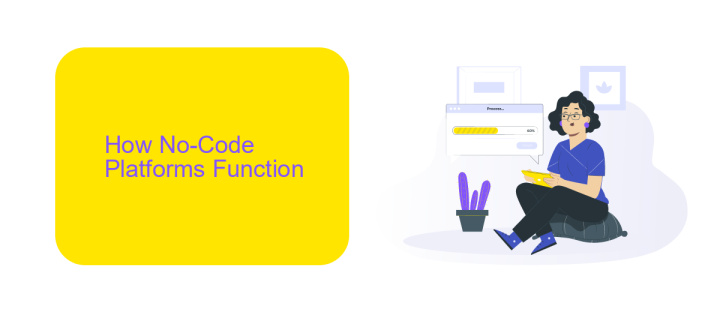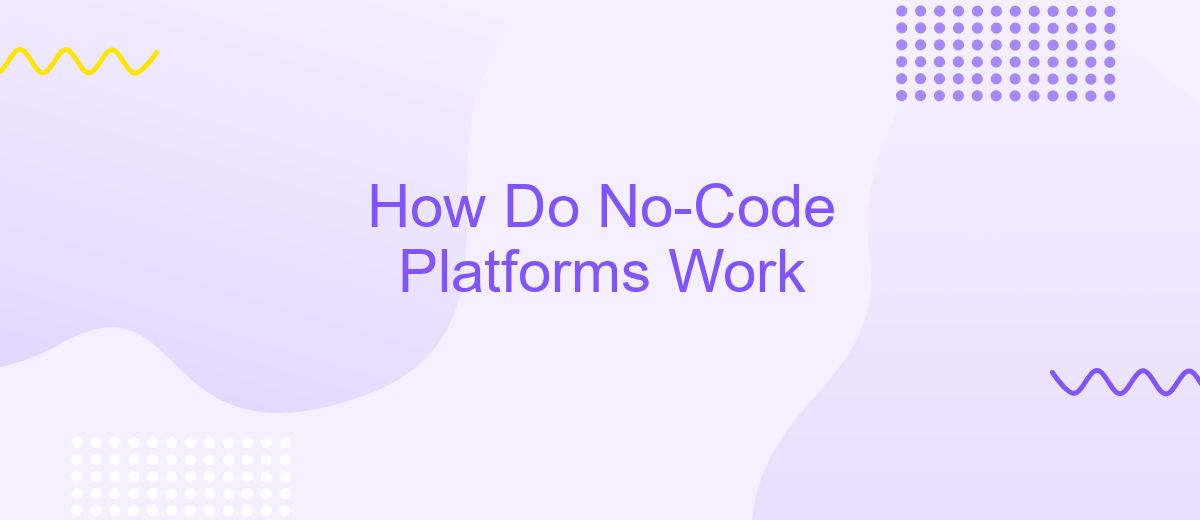How Do No-Code Platforms Work
No-code platforms are revolutionizing the way we build software by enabling users to create applications without writing a single line of code. These platforms use visual interfaces, drag-and-drop components, and pre-built templates to simplify the development process. This article explores how no-code platforms work, their underlying technologies, and the benefits they offer to both novice and experienced developers.
Introduction
No-code platforms have revolutionized the way we approach software development by enabling individuals without programming skills to create functional applications. These platforms offer intuitive interfaces and drag-and-drop functionalities, making it accessible for anyone to build and deploy software solutions.
- Visual development: Design applications using graphical interfaces.
- Pre-built templates: Utilize ready-made templates to speed up development.
- Integration options: Connect with other tools and services seamlessly.
- Scalability: Easily scale applications as your needs grow.
One of the key features of no-code platforms is their ability to integrate with various services. Tools like ApiX-Drive simplify this process by offering a user-friendly interface to set up integrations between different applications. This allows users to automate workflows and enhance the functionality of their no-code solutions without writing a single line of code. As a result, businesses can innovate faster and more efficiently, breaking down traditional barriers to software development.
How No-Code Platforms Function

No-code platforms operate by providing a visual development environment where users can create applications through graphical interfaces rather than traditional coding. These platforms utilize drag-and-drop functionalities, pre-built templates, and customizable modules to enable users to design and deploy applications quickly. By abstracting the underlying code, no-code platforms allow individuals without programming skills to build complex applications, thereby democratizing software development.
Integration capabilities are a key feature of no-code platforms, enabling seamless connectivity with various third-party services and APIs. For instance, services like ApiX-Drive facilitate easy integration by allowing users to connect different applications and automate workflows without writing any code. This enhances the functionality of the created applications, making it possible to sync data, trigger actions, and streamline processes across multiple platforms. As a result, businesses can achieve greater efficiency and agility in their operations.
Benefits and Applications

No-code platforms offer numerous benefits, making them a popular choice for businesses and individuals looking to develop applications quickly and efficiently. These platforms eliminate the need for extensive coding knowledge, allowing users to focus on functionality and design. This greatly reduces development time and costs, providing a more accessible entry point for startups and small businesses.
- Rapid Prototyping: Quickly create and test application prototypes without extensive coding.
- Cost Efficiency: Lower development costs by reducing the need for specialized coding skills.
- Ease of Use: Intuitive interfaces make it easy for non-developers to build applications.
- Integration Capabilities: Seamlessly integrate with various services and tools, such as ApiX-Drive, to automate workflows and connect different systems.
- Scalability: Easily scale applications as your business grows without significant redevelopment.
No-code platforms are versatile and can be applied in various industries, from e-commerce to healthcare. For instance, businesses can use these platforms to automate customer relationship management, streamline internal processes, or develop custom solutions tailored to their specific needs. Tools like ApiX-Drive further enhance the functionality by enabling seamless integrations, ensuring that your applications can communicate effectively with other essential services.
Considerations and Challenges

No-code platforms offer immense potential for businesses, but they come with their own set of considerations and challenges. Understanding these can help organizations make informed decisions.
One of the main challenges is the limitation in customization. While no-code platforms offer a wide range of functionalities, they may not always meet specific business requirements. Additionally, there can be concerns about scalability, especially for rapidly growing businesses.
- Integration Issues: Integrating no-code platforms with existing systems can be complex. Tools like ApiX-Drive can simplify this process by offering seamless integration solutions.
- Security Concerns: Ensuring data security and compliance with regulations can be challenging on no-code platforms.
- User Dependency: Relying heavily on no-code platforms may lead to a lack of technical knowledge within the organization.
Despite these challenges, no-code platforms continue to evolve, offering more robust solutions for businesses. By carefully evaluating their needs and leveraging tools like ApiX-Drive for integrations, organizations can effectively harness the power of no-code platforms while mitigating potential risks.
Future of No-Code Platforms
The future of no-code platforms looks incredibly promising as they continue to democratize software development. With advancements in artificial intelligence and machine learning, these platforms are becoming more intuitive, allowing even those with minimal technical skills to create complex applications. The growing ecosystem of plugins and integrations further enhances their capabilities, making it easier to connect various tools and services seamlessly.
One notable example is ApiX-Drive, a service that simplifies the process of setting up integrations between different applications. As no-code platforms evolve, the ability to effortlessly link various software solutions will become even more critical. ApiX-Drive provides a user-friendly interface to automate workflows, enabling businesses to save time and reduce errors. As more organizations adopt no-code solutions, the demand for such integration services will undoubtedly rise, heralding a new era of innovation and efficiency in software development.
FAQ
What are no-code platforms?
Who can benefit from using no-code platforms?
How do no-code platforms handle integrations with other software?
Are no-code platforms secure and scalable?
Can complex applications be built using no-code platforms?
Time is the most valuable resource in today's business realities. By eliminating the routine from work processes, you will get more opportunities to implement the most daring plans and ideas. Choose – you can continue to waste time, money and nerves on inefficient solutions, or you can use ApiX-Drive, automating work processes and achieving results with minimal investment of money, effort and human resources.

